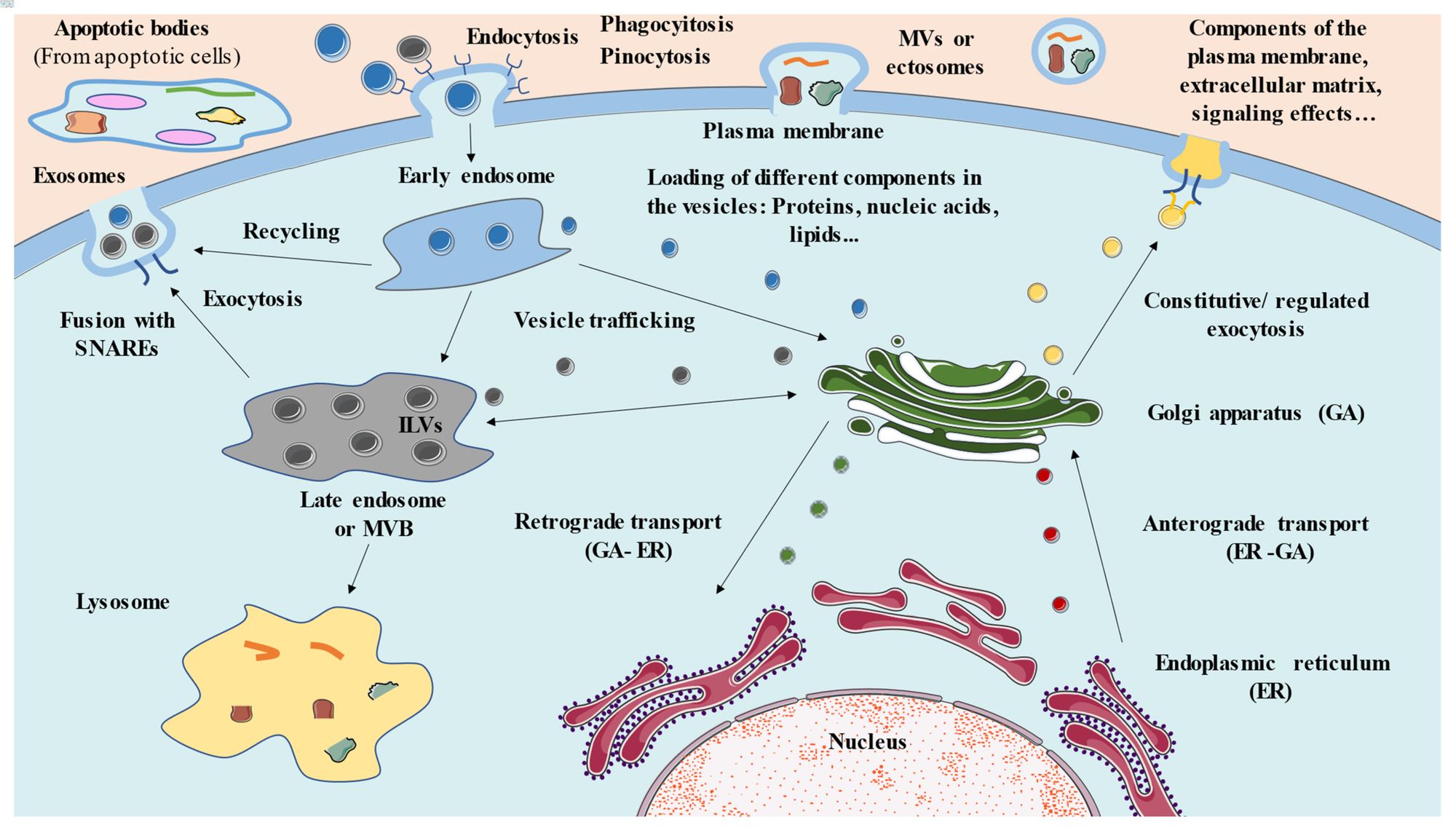
Vesicular transport is a crucial cellular process that moves molecules within cells. But what exactly is vesicular transport? In simple terms, it involves tiny sacs called vesicles that shuttle substances like proteins, lipids, and waste products to different parts of the cell. These vesicles bud off from one membrane and fuse with another, ensuring that cellular cargo reaches its destination. This process is vital for maintaining cellular organization and function. Without vesicular transport, cells would struggle to distribute nutrients, remove waste, and communicate with each other. Understanding this process helps us grasp how cells operate and stay healthy. Dive into these 31 facts to learn more about this fascinating cellular mechanism!
What is Vesicular Transport?
Vesicular transport is a cellular process that moves molecules between different compartments within cells. This process involves small, membrane-bound sacs called vesicles. These vesicles transport proteins, lipids, and other molecules to various destinations within the cell.
- Vesicular transport is essential for maintaining cellular organization and function.
- It helps in the distribution of nutrients and removal of waste products.
- This process is crucial for the secretion of hormones and neurotransmitters.
- Vesicles can transport molecules to the cell membrane for exocytosis.
- Endocytosis is a form of vesicular transport that brings substances into the cell.
Types of Vesicular Transport
There are several types of vesicular transport, each with a specific role in cellular function. Understanding these types can help clarify how cells maintain their internal environment.
- Exocytosis involves vesicles fusing with the plasma membrane to release their contents outside the cell.
- Endocytosis is the process of taking in substances by engulfing them in a vesicle.
- Phagocytosis is a type of endocytosis where large particles are engulfed.
- Pinocytosis is another form of endocytosis that involves the ingestion of liquid.
- Receptor-mediated endocytosis uses receptors to capture specific molecules.
Mechanisms of Vesicular Transport
The mechanisms behind vesicular transport are complex and involve various proteins and pathways. These mechanisms ensure that vesicles reach their correct destinations.
- Coat proteins like clathrin help in vesicle formation.
- SNARE proteins facilitate the fusion of vesicles with target membranes.
- Rab proteins are involved in vesicle docking and fusion.
- Motor proteins like kinesin and dynein transport vesicles along microtubules.
- The Golgi apparatus plays a key role in modifying and sorting vesicle contents.
Importance in Health and Disease
Vesicular transport is not just a cellular housekeeping process; it has significant implications for health and disease. Disruptions in this process can lead to various medical conditions.
- Defects in vesicular transport can cause neurodegenerative diseases.
- Vesicular transport is crucial for immune responses.
- Cancer cells often hijack vesicular transport mechanisms to grow and spread.
- Proper vesicular transport is essential for insulin secretion.
- Some pathogens exploit vesicular transport to enter and infect cells.
Vesicular Transport in Neurons
Neurons rely heavily on vesicular transport for communication. This process is vital for the release of neurotransmitters, which are chemicals that transmit signals between nerve cells.
- Synaptic vesicles store neurotransmitters in neurons.
- Calcium ions trigger the release of neurotransmitters from synaptic vesicles.
- Vesicular transport is essential for synaptic plasticity, which underlies learning and memory.
- Disruptions in vesicular transport can lead to neurological disorders like Alzheimer's disease.
- Vesicular transport is involved in the recycling of synaptic vesicles.
Technological Advances in Studying Vesicular Transport
Recent technological advances have provided new insights into vesicular transport. These tools have allowed scientists to study this process in greater detail.
- Fluorescent tagging helps visualize vesicles in live cells.
- Electron microscopy provides high-resolution images of vesicles.
- CRISPR technology allows for the manipulation of genes involved in vesicular transport.
- Live-cell imaging techniques enable the observation of vesicular transport in real-time.
- Mass spectrometry helps identify proteins involved in vesicular transport.
Future Directions in Vesicular Transport Research
Research in vesicular transport is ongoing, with many exciting possibilities on the horizon. Understanding this process better could lead to new treatments for various diseases.
- Targeting vesicular transport pathways could provide new cancer therapies.
The Final Word on Vesicular Transport
Vesicular transport is a fascinating process that keeps cells functioning smoothly. It involves tiny sacs called vesicles that move molecules around within cells and even outside them. This system is crucial for many cellular activities, like transporting proteins, lipids, and waste. Without vesicular transport, cells wouldn't be able to communicate or maintain their internal environment.
Understanding this process helps us grasp how cells work and how they respond to changes. It also sheds light on various diseases that occur when vesicular transport goes wrong. Scientists continue to study this area to find new treatments and improve our health.
So, next time you think about how your body works, remember the tiny vesicles tirelessly moving things around. They might be small, but their role is huge in keeping us alive and well.
Was this page helpful?
Our commitment to delivering trustworthy and engaging content is at the heart of what we do. Each fact on our site is contributed by real users like you, bringing a wealth of diverse insights and information. To ensure the highest standards of accuracy and reliability, our dedicated editors meticulously review each submission. This process guarantees that the facts we share are not only fascinating but also credible. Trust in our commitment to quality and authenticity as you explore and learn with us.
